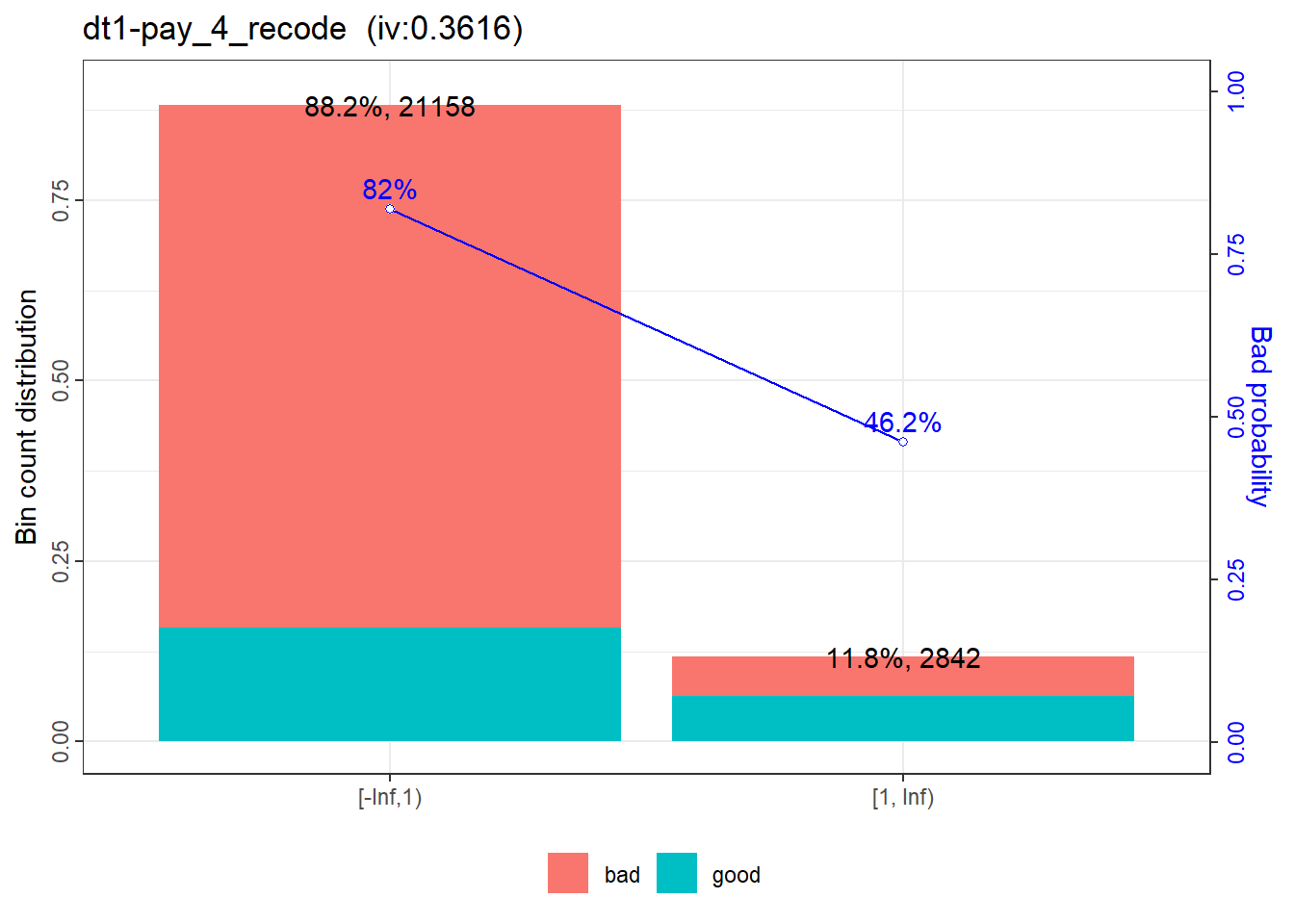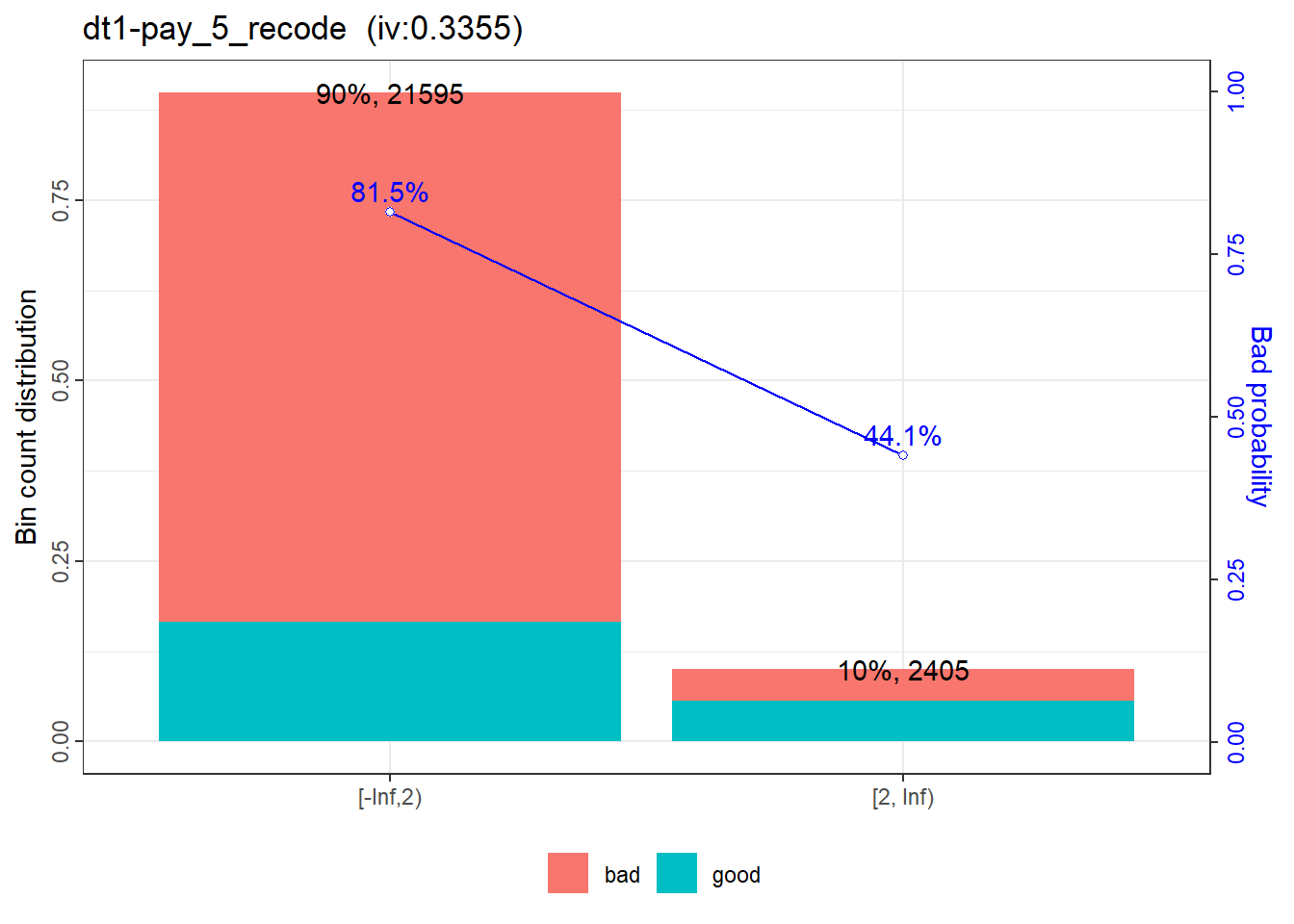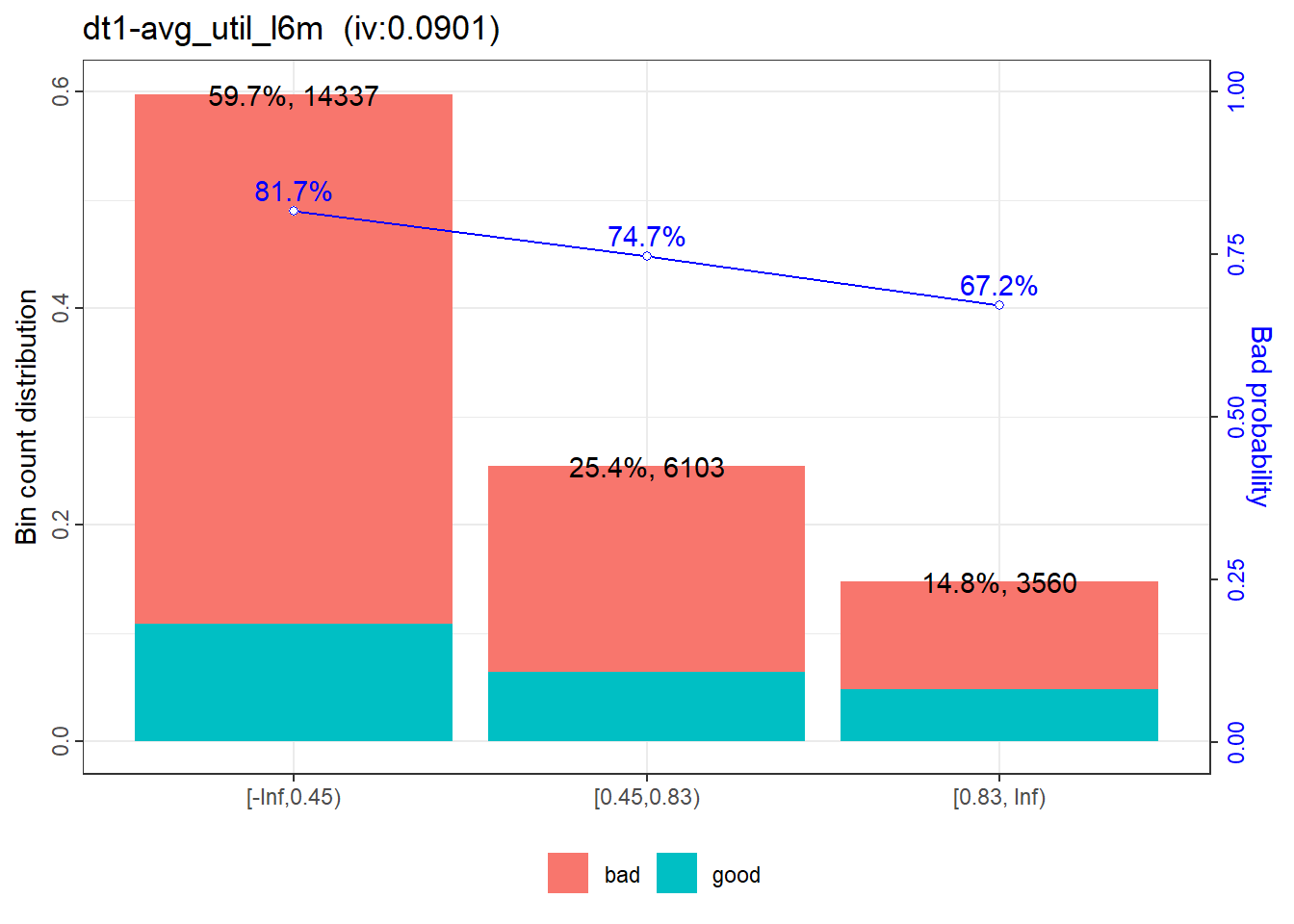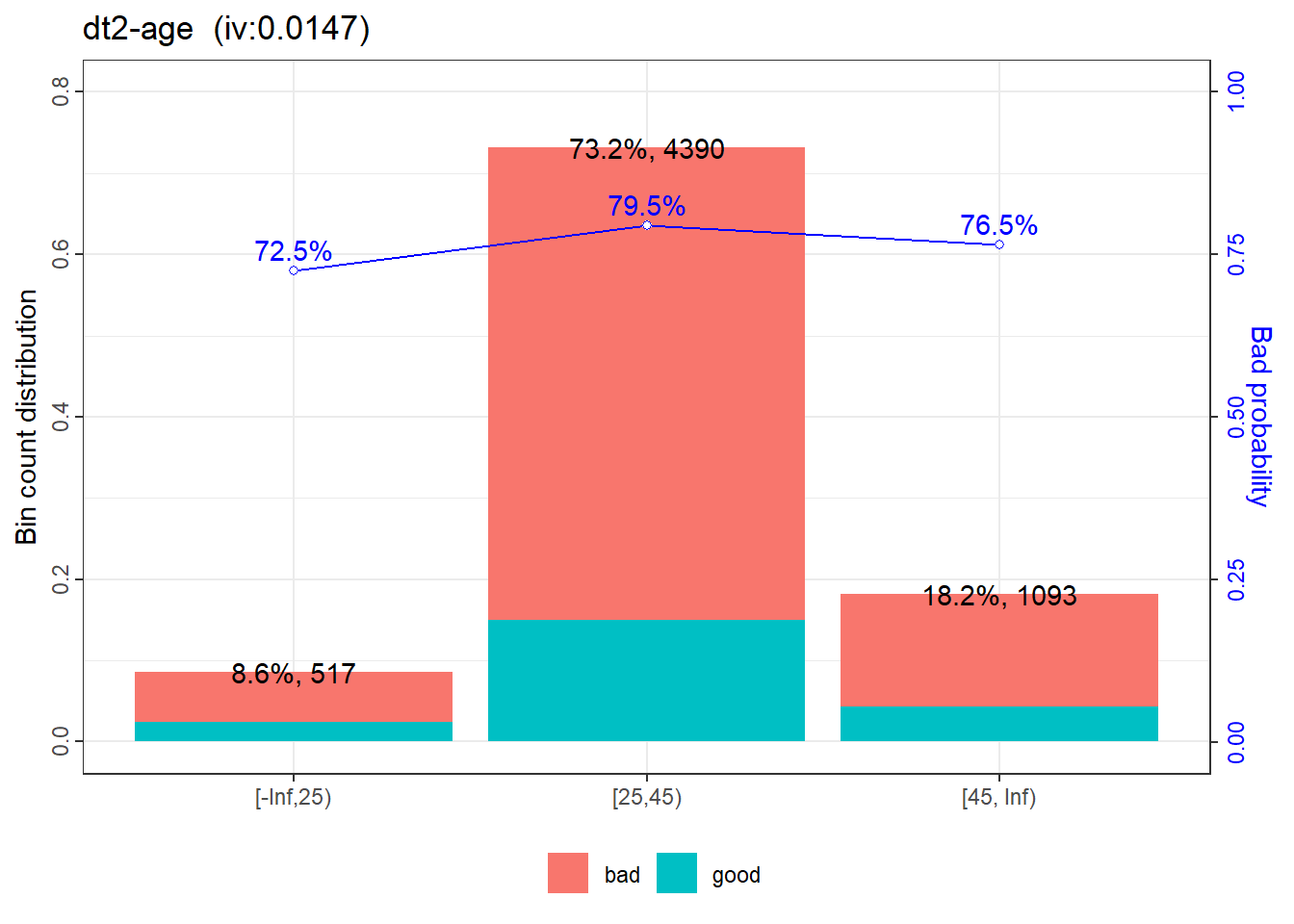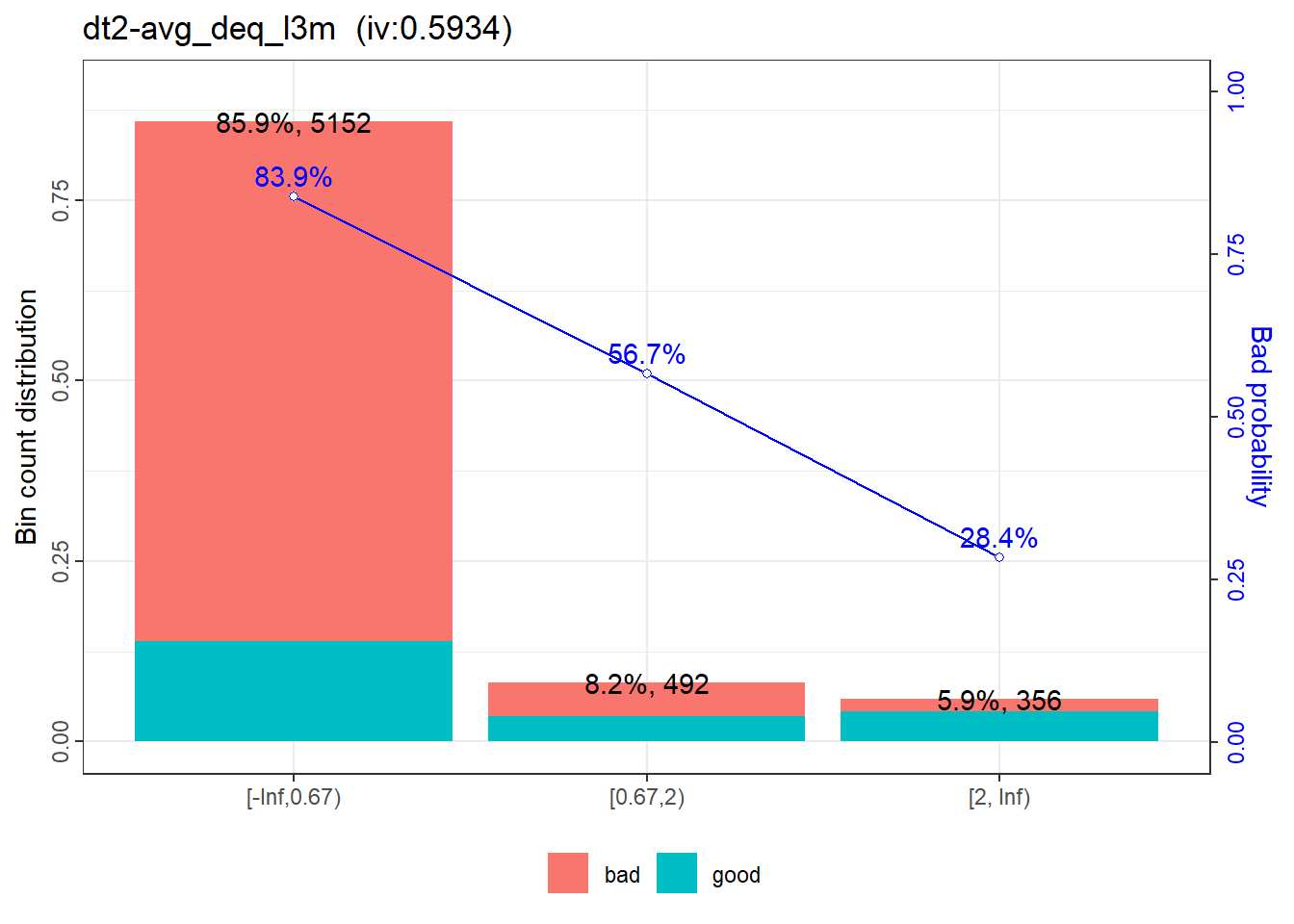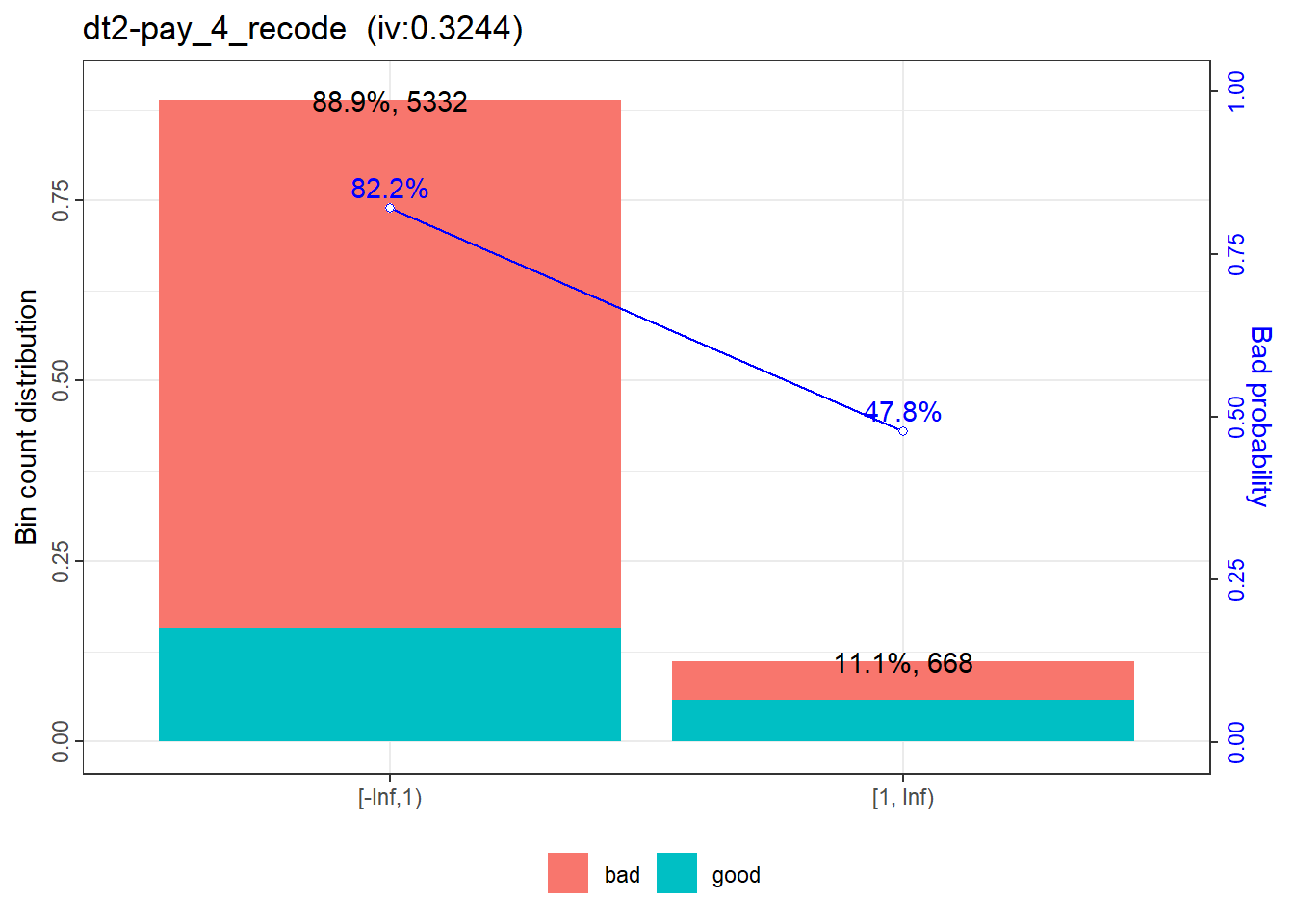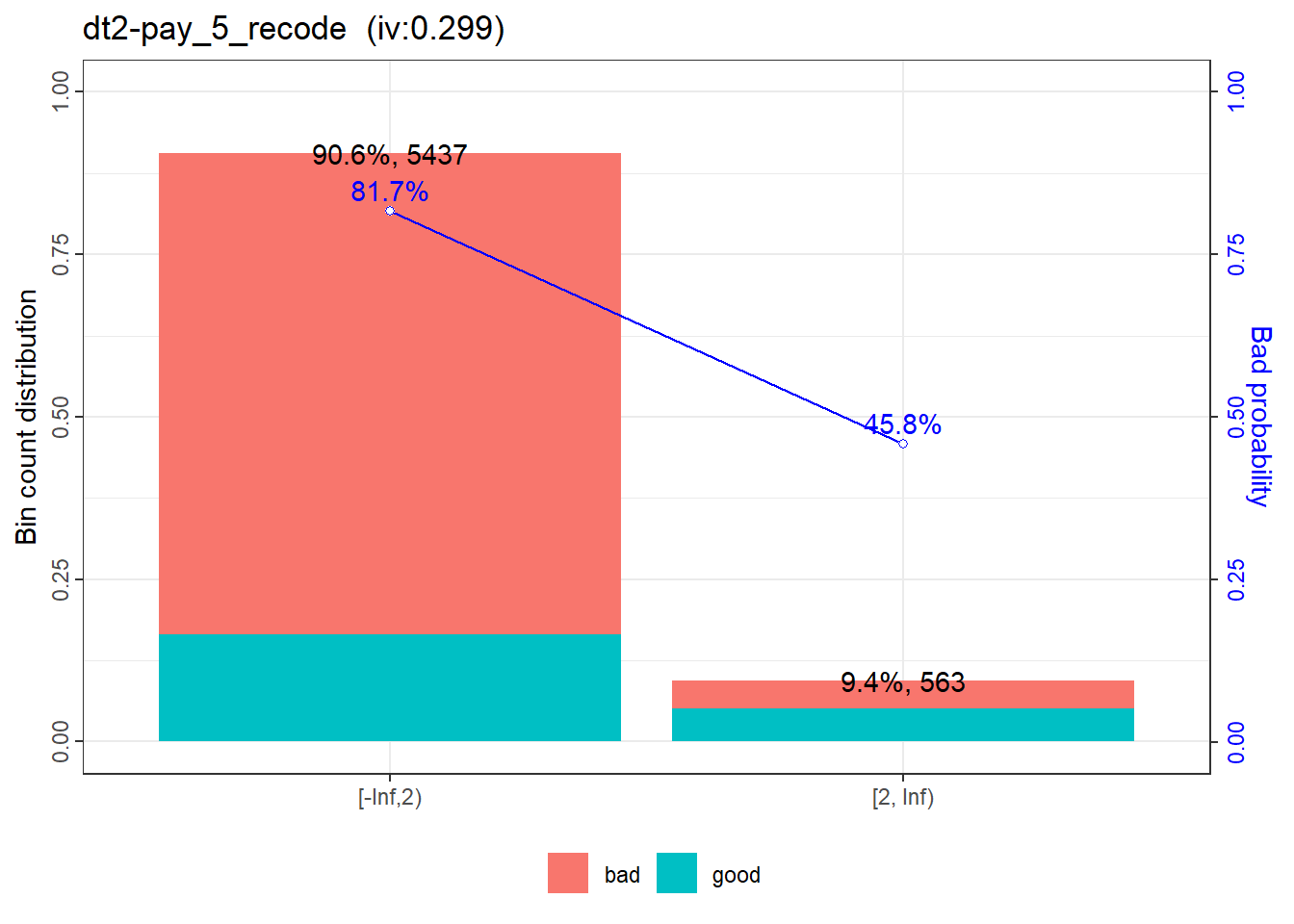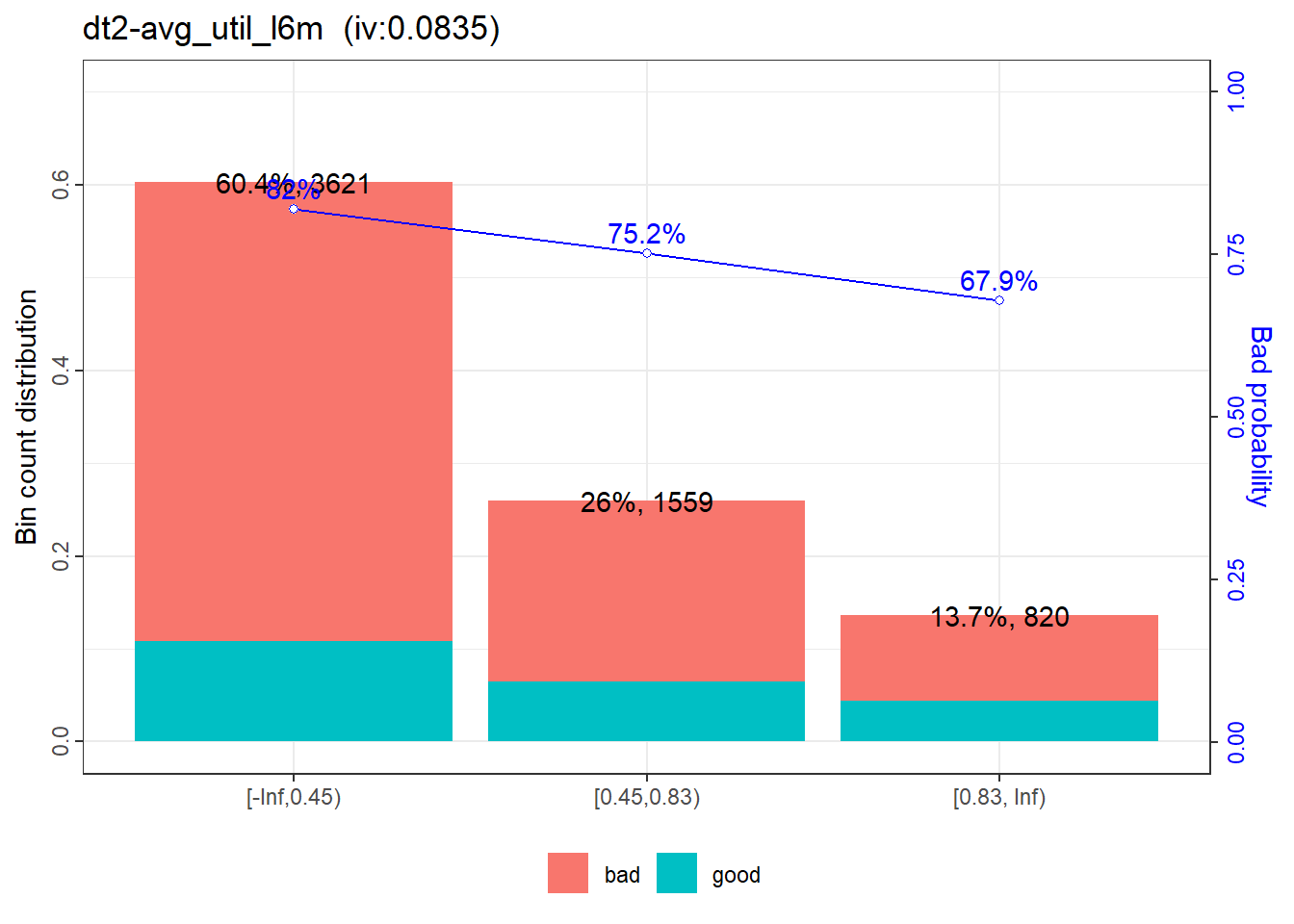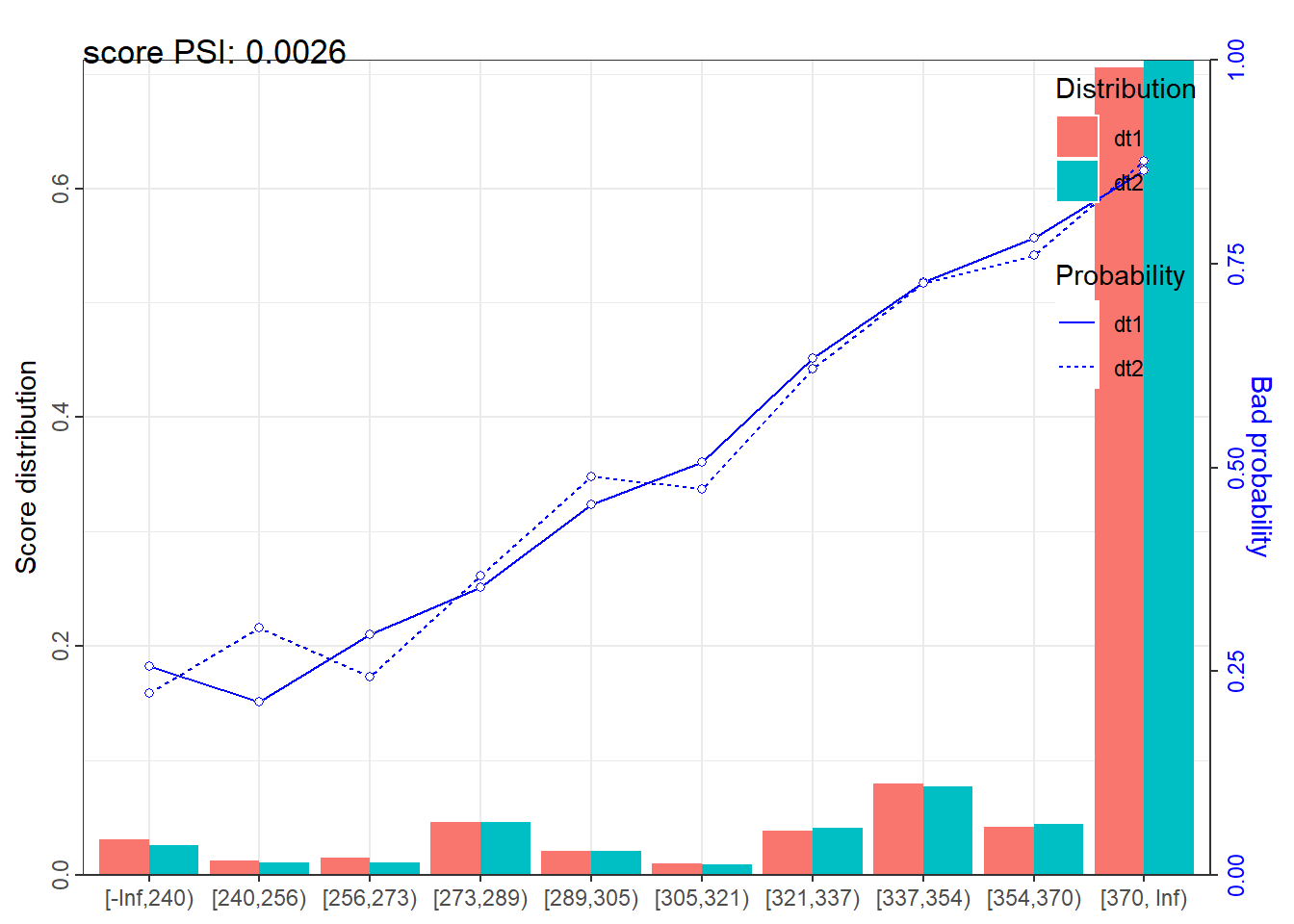1
2
3
4
5
6
7
8
9
10
11
12
13
14
15
16
17
18
19
20
21
22
23
24
25
26
27
28
29
30
31
32
33
34
35
36
37
38
39
40
41
42
43
44
45
46
47
48
49
50
51
52
53
54
55
56
57
58
59
60
61
62
63
64
65
66
67
68
69
70
71
72
73
74
75
76
77
78
79
|
## $basepoints
## variable bin woe points
## 1: basepoints NA NA 0
##
## $pay_2_recode
## Empty data.table (0 rows and 13 cols): variable,bin,count,count_distr,good,bad...
##
## $pay_3_recode
## Empty data.table (0 rows and 13 cols): variable,bin,count,count_distr,good,bad...
##
## $pay_6_recode
## Empty data.table (0 rows and 13 cols): variable,bin,count,count_distr,good,bad...
##
## $avg_deq_l6m
## Empty data.table (0 rows and 13 cols): variable,bin,count,count_distr,good,bad...
##
## $max_deq_l6m
## Empty data.table (0 rows and 13 cols): variable,bin,count,count_distr,good,bad...
##
## $min_deq_l3m
## Empty data.table (0 rows and 13 cols): variable,bin,count,count_distr,good,bad...
##
## $min_deq_l6m
## Empty data.table (0 rows and 13 cols): variable,bin,count,count_distr,good,bad...
##
## $bill_amt2_util
## Empty data.table (0 rows and 13 cols): variable,bin,count,count_distr,good,bad...
##
## $bill_amt5_util
## Empty data.table (0 rows and 13 cols): variable,bin,count,count_distr,good,bad...
##
## $max_util_l3m
## Empty data.table (0 rows and 13 cols): variable,bin,count,count_distr,good,bad...
##
## $age
## variable bin count count_distr good bad badprob woe
## 1: age [-Inf,25) 2168 0.09033333 588 1580 0.7287823 -0.26366705
## 2: age [25,45) 17639 0.73495833 3711 13928 0.7896139 0.07047959
## 3: age [45, Inf) 4193 0.17470833 1037 3156 0.7526830 -0.13914675
## bin_iv total_iv breaks is_special_values points
## 1: 0.006734044 0.01382605 25 FALSE 16
## 2: 0.003579285 0.01382605 45 FALSE 25
## 3: 0.003512724 0.01382605 Inf FALSE 19
##
## $pay_1_recode
## variable bin count count_distr good bad badprob woe
## 1: pay_1_recode [-Inf,1) 18504 0.771000 2567 15937 0.8612732 0.5737853
## 2: pay_1_recode [1,2) 2943 0.122625 995 1948 0.6619096 -0.5803045
## 3: pay_1_recode [2, Inf) 2553 0.106375 1774 779 0.3051312 -2.0751013
## bin_iv total_iv breaks is_special_values points
## 1: 0.21391743 0.8648336 1 FALSE 45
## 2: 0.04764138 0.8648336 2 FALSE 1
## 3: 0.60327484 0.8648336 Inf FALSE -57
##
## $pay_4_recode
## variable bin count count_distr good bad badprob woe
## 1: pay_4_recode [-Inf,1) 21158 0.8815833 3806 17352 0.8201153 0.2650088
## 2: pay_4_recode [1, Inf) 2842 0.1184167 1530 1312 0.4616467 -1.4058353
## bin_iv total_iv breaks is_special_values points
## 1: 0.05735741 0.3616306 1 FALSE 28
## 2: 0.30427319 0.3616306 Inf FALSE -3
##
## $pay_5_recode
## variable bin count count_distr good bad badprob woe
## 1: pay_5_recode [-Inf,2) 21595 0.8997917 3992 17603 0.8151424 0.2316568
## 2: pay_5_recode [2, Inf) 2405 0.1002083 1344 1061 0.4411642 -1.4885586
## bin_iv total_iv breaks is_special_values points
## 1: 0.04517924 0.3354879 2 FALSE 27
## 2: 0.29030861 0.3354879 Inf FALSE -6
##
## $avg_util_l6m
## variable bin count count_distr good bad badprob woe
## 1: avg_util_l6m [-Inf,0.45) 14337 0.5973750 2621 11716 0.8171863 0.2452793
## 2: avg_util_l6m [0.45,0.83) 6103 0.2542917 1546 4557 0.7466820 -0.1711267
## 3: avg_util_l6m [0.83, Inf) 3560 0.1483333 1169 2391 0.6716292 -0.5365572
## bin_iv total_iv breaks is_special_values points
## 1: 0.033490587 0.09009968 0.45 FALSE 32
## 2: 0.007798286 0.09009968 0.83 FALSE 17
## 3: 0.048810811 0.09009968 Inf FALSE 4
|




